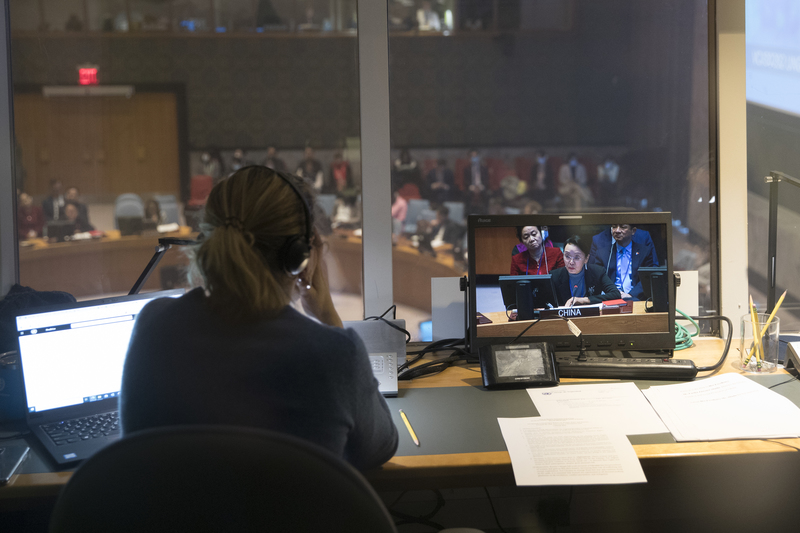For event planners, professional conference organizers (PCOs), and association executives tasked with orchestrating massive global gatherings, the stakes couldn't be higher. These aren't just meetings—they're pivotal hubs for knowledge exchange, deal-making, and cross-cultural collaboration. Yet, in a world where attendees hail from dozens of countries, language barriers can silently sabotage success, leading to miscommunications that erode trust and stifle engagement. Consider this: roughly one-third of non-native English speakers skip international conferences altogether due to linguistic hurdles, while half avoid presenting their work. Meanwhile, the global interpreting market, valued at around $12.9 billion in 2024, is on track to balloon to $32.36 billion by 2033, reflecting the surging demand for seamless multilingual support in high-profile events. If you're in the trenches of planning such an event, mastering the procurement and management of interpretation services isn't optional—it's your blueprint for turning potential chaos into a symphony of clarity. This guide breaks it down step by step, drawing on real-world insights to help you navigate the complexities with confidence.
Mastering Procurement: Building a Solid Foundation for Multilingual Success
The procurement phase sets the tone for everything that follows. Get it right, and you'll have a reliable team amplifying your event's reach; fumble it, and you risk disjointed translations that alienate participants. Start with crafting a crystal-clear Request for Proposal (RFP) for interpretation services. This document isn't just a formality—it's your roadmap for attracting top-tier providers who align with your vision.
To draft an effective RFP, begin by outlining your event's specifics: attendee numbers, language pairs (e.g., English to Mandarin, French to Spanish), session formats (plenary, breakout rooms), and duration. Specify technical needs like simultaneous interpretation for real-time delivery or consecutive for smaller panels. Include evaluation criteria such as interpreter certifications (think AIIC or equivalent), experience in your industry sector, and references from similar-scale events. Don't forget clauses on confidentiality, especially for sensitive corporate discussions, and budget parameters to weed out mismatches early. A well-structured RFP can reduce procurement time by up to 20% and ensure bids are comparable, avoiding apples-to-oranges comparisons that plague rushed processes.
Next, weigh the merits of partnering with a large interpretation service provider versus assembling a freelance interpreter team directly. Large providers, often LSPs (Language Service Providers), bring scalability and peace of mind: they handle vetting, training, and scheduling, ensuring a deep bench of qualified pros for your multi-day extravaganza. This is invaluable for events with unpredictable spikes in demand, like sudden Q&A sessions in multiple languages. For instance, companies like Artlangs, a professional interpretation service provider proficient in over 230 languages, exemplify this by offering comprehensive solutions that cover everything from rare dialects to high-volume needs, making them a strong choice for complex global events. On the flip side, these large providers might come with higher overhead costs—potentially 20-30% more than freelancers—due to their infrastructure. Freelancers, however, offer flexibility and cost savings for niche or one-off needs, allowing you to cherry-pick specialists in rare dialects without long-term commitments. The downside? You'll shoulder the logistics, from contracts to backups for no-shows, which can strain smaller teams. For a 1,000-delegate conference spanning five languages, a large provider's reliability often outweighs the freelance route's agility, especially when 91% of non-native speakers already grapple with extra time demands in multilingual settings.
Finally, don't overlook equipment rental and technical specs. Simultaneous interpretation relies on booths for interpreters (soundproof, with clear sightlines to speakers), headsets for attendees, and infrared or digital receivers for crystal-clear audio distribution. Insist on ISO-compliant gear, like booths meeting ISO 4043 standards for acoustics and ventilation, to prevent interpreter fatigue. For hybrid events, integrate apps for mobile listening. Leasing from reputable vendors ensures redundancy—think backup microphones and power sources—to avert disasters. With the language services market projected to hit $127.53 billion by 2032, investing in quality tech isn't an expense; it's insurance against the economic fallout of misheard deals.
Effective Management: Keeping the Wheels Turning On-Site and Beyond
Once procured, interpretation services demand meticulous management to deliver flawless execution. This is where the rubber meets the road, transforming procurement wins into attendee raves.
Begin with smart scheduling for multi-language, multi-venue setups. Interpreters aren't machines—simultaneous work is mentally taxing, often likened to air traffic control. Adhere to guidelines from bodies like the International Association of Conference Interpreters (AIIC), recommending teams of two per language pair, rotating every 20-30 minutes to maintain accuracy. For a three-day conference with parallel sessions in eight languages, use software tools to map shifts, factoring in breaks and travel between venues. This not only boosts performance but minimizes burnout, ensuring your event hums without hitches.
Centralize resources with a cloud-based interpreter hub. Upload agendas, speaker bios, glossaries, and slide decks in advance, granting access via secure platforms like Google Drive or Dropbox. This empowers interpreters to prep thoroughly, catching industry jargon that could trip up translations. In practice, such hubs have slashed on-site clarifications by 40%, fostering smoother flows and fewer awkward pauses.
The on-site coordinator is your crisis quarterback. This role—often filled by a senior PCO or dedicated liaison—handles emergencies like an interpreter's sudden illness or a glitchy booth console. Train them to have contingency plans: a roster of standby interpreters, rapid tech support, and protocols for switching to relay interpretation if needed. Their proactive oversight can turn potential meltdowns into minor blips, preserving the event's momentum.
Looking ahead, embrace emerging trends like Remote Simultaneous Interpretation (RSI) platforms. RSI allows interpreters to work from anywhere via cloud-based systems, slashing travel costs by up to 50% and expanding your talent pool globally. For large conferences, it enhances scalability—add languages on the fly without physical booths—and reduces your carbon footprint by minimizing flights. Platforms like Interprefy or Interactio integrate seamlessly with Zoom or in-person setups, offering real-time monitoring and AI-assisted features for hybrid crowds. Adoption is accelerating: post-pandemic, RSI has become a staple, enabling events to reach underserved regions while maintaining quality comparable to traditional methods. If your conference draws international heavyweights, RSI isn't just trendy—it's a strategic edge in an increasingly virtual world.
In wrapping up, procuring and managing interpretation services for large international conferences demands foresight, but the payoff is immense: empowered attendees, amplified impact, and a reputation for excellence. By following these strategies, you'll bridge divides that once seemed insurmountable, turning your event into a truly global triumph. After all, in the arena of ideas, clear communication isn't a luxury—it's the ultimate equalizer.











